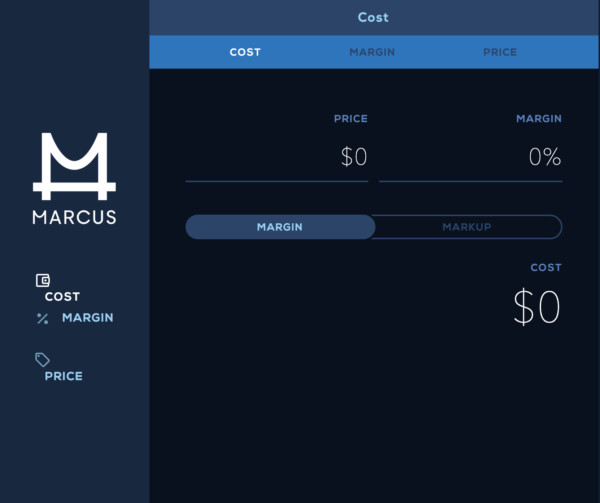Have you ever borrowed money? At one point or another in our lives, we have all wanted—or needed—to buy or pay for something without having the means to do so. Suppose you’ve borrowed money from someone you know or a financial institution, with a promise to repay it. In that case, you are basically “indebted” to pay it back. This is what we call “debt.” But based on this very simplistic example, most would assume that having debt is a bad thing. After all, nobody wants to be “indebted” to someone else. But what if that borrowed money is invested in a way that makes you even more money? What if you become indebted for a short period of time, make more than enough money to pay it all back (plus interest), and still have a good amount of money left to continue growing? Does that sound like a bad thing? Not really. Some debt could have a positive outcome.
Sometimes your financial situation, along with other factors, is what makes the difference between good debt vs. bad debt. But by definition, all debt is the same. It is something—usually money—that we borrow now, and we pay back later. We have to look at the consequences of the debt and, based on that, determine whether or not it will be good debt or bad debt to get into.
- Good debt has the potential to increase your net worth.
- Bad debt might leave you with nothing lasting to show for it.
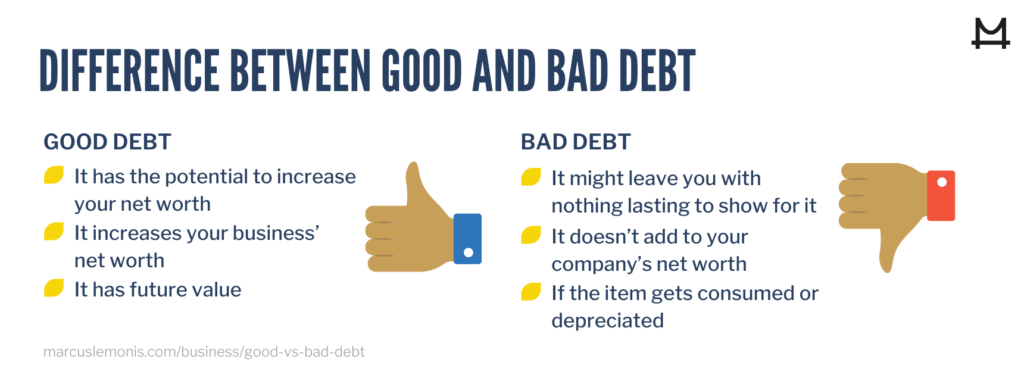
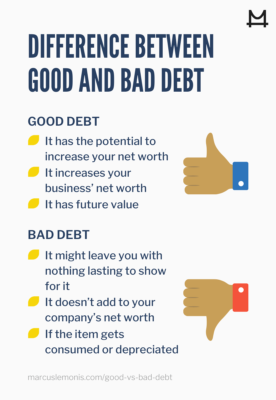
Good Debt vs. Bad Debt in Business
So we have touched on the main difference between good debt vs. bad debt as it applies in general terms to us all. Knowing that difference is important for everyone—regardless of age. Trust me, I wish someone would have told me all about good debt while I was still in high school. So, if you have any young people in your life, share the knowledge. But now, back to business. Literally. How does good debt vs. bad debt contrast affect a business? Good debt vs. bad debt in business is basically the same as what was discussed above:
- If it increases your business’ net worth or has future value, it is good debt.
- If it doesn’t add to your company’s net worth, or the item gets consumed or depreciated, it’s bad debt.
Let’s demonstrate the difference between good debt vs. bad debt in business by taking you through a few examples:
1. Mortgage Debt
You get a mortgage today to buy the space where you’re setting up shop or the plot of land where you’re going to build your business. In 15 to 30 years, when you’ve paid off that mortgage, the real estate could be worth two or three times its purchase price—good debt.
2. Small Business Loan
You go to a bank or a credit union with your business plan, ready to be indebted to that financial institution for a few years. You invest that loan into expanding your business by buying faster machines, a new technology that makes you more efficient, expand to a second store, or even build a full e-commerce website to expand sales. Whatever you end up doing with that money, allows your business to increase its margins and/or revenue. Now you can pay back, plus interest, and have a more robust business with a larger footprint for years to come—good debt.
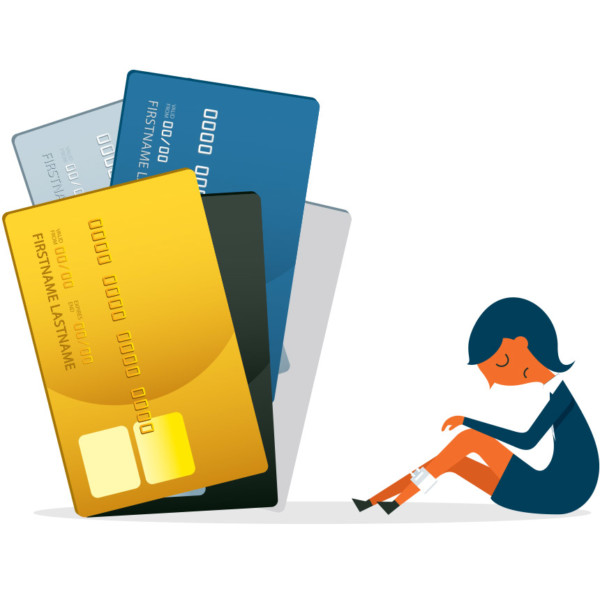
3. Credit Card Debt
Credit cards are rarely used to finance anything that will return its cost to your business, and usually, the interest rates are surprisingly high. While having a corporate credit card could help you manage business expenses, if you don’t pay off your balance in full each month, then the interest payments can quickly get out of hand. So, depending on what it is that you use your credit card for (going back to the rules above “in a nutshell”), credit card debt is—questionable debt.
4. Cash Loans
Taking out a loan to increase the company’s cash flow and cover expenses such as payroll, utilities, leases might sound like a good idea if you ever find yourself in a bind. After all, nobody wants to tell their staff that there’s no money to cover their paychecks. But not only does a cash loan usually come with very high-interest rates, but it will also leave you with nothing to show for it except a loan shark asking you for their money back—bad debt.
5. Debt to Cover Debt
Same as a cash loan. If your business is going through a rough patch and you decide to take out a loan to pay for another loan, you are just digging yourself into a deeper hole. You might cover one debt, but now you have another debt to worry about and no cash flow to cover it —bad debt.
Restructuring your debt by selling off some of your assets, downsizing, or opening up your business to potential investors might be a better way out of your business’s situation
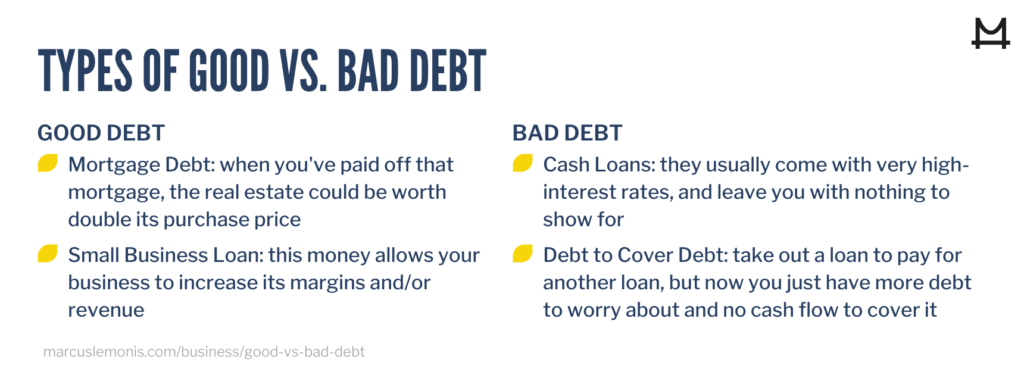
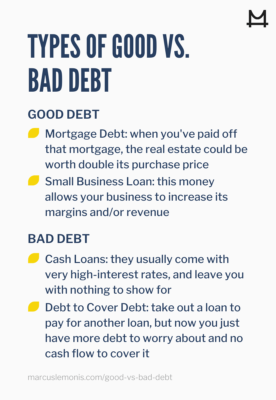
When it comes to good debt vs. bad debt in business, wise entrepreneurs should maximize good debt and minimize bad debt. As mentioned before, credit card debt can be tricky and dangerous due to the higher interest rates compared to a small business loan. When you fall into the risky habit of purchasing things you can’t afford by putting them on plastic, you’re digging your business into an early grave. But in certain cases, credit card debt can be the right option. In the early 1980’s John Hewitt, founder of Jackson Hewitt Tax Services, started his company with a cash advance from a credit card. He borrowed $25,000 on credit cards at an 18% interest rate. He didn’t realize that the $25,000 loan would someday equate to $10 million when he sold Jackson Hewitt many years later (Hewitt, 2016).

There’s no downside to using a credit card to make purchases as long as you commit to paying off the debt before it accrues interest. Plus, there is a great benefit to using a corporate credit card: the rewards and perks.
Let’s look at a hypothetical example using a family-run BBQ restaurant. Let’s say that to expand their business, the owners have decided to invest $12,000 on a new custom-built, charcoal BBQ pit, grill, and smoker.

While they might have the cash flow to pay for it, they decided to put in on a corporate credit card with a rewards program that earns them 2% cashback on purchases. Now, the $12,000 worth of equipment only ended up costing them $11,760—that is $240 in savings!
Then, since they had the cash flow to cover the purchase, they can proceed to pay the full balance of the credit card and not have to worry about any interests at the end of the month. That is a good way to manage credit card debt in business.
Now let’s look at a real-life situation. When Marcus consulted with a specialty coffee company in California, he found that although the business was bringing in great revenue and was virtually free of bad debt, they had a cash flow problem. Instead of taking out a cash loan or taking on new debt to pay for other debts, the business owner leveraged its equity instead. He solved his problem without getting his business into a bad debt hole by trading an ownership percentage in the business for a cash investment from Marcus.

With this money, they were able to grow the business and ultimately quadruple their number of locations throughout the state. While this is not as clear cut an example of good debt, it is definitely an example of creative financing to avoid bad debt in business.
The bottom line is that you must think like a serious investor every time you take an action that will increase your debt. Ask yourself, “what is the return on investment of this expense?” If the answer is less than what the debt will cost you (taking into consideration interest and the value of money in time), then consider waiting until you can make the investment from cash flow instead of taking on new debt.
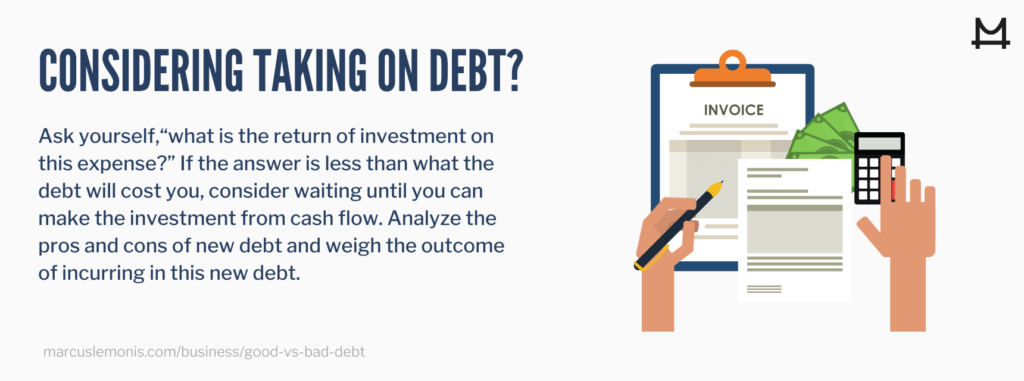
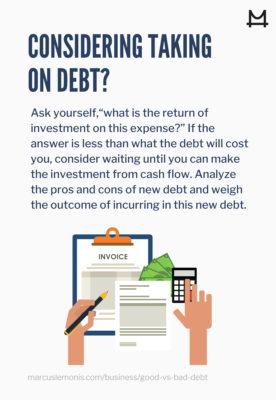
Of course, sometimes you just can’t wait—for example, if your equipment breaks down and runs up a large repair bill. You might have to incur some debt to get the business up and running again. But this is why an emergency savings account is such a fantastic debt-management tool. If you can pay for that pricey crisis out of savings instead of taking on more debt, you’ll save your business a substantial amount in interest payments.
Analyze the pros and cons of new debt and weigh the outcome of incurring this new debt. Remember, debt is debt. In the long run, it is simply money borrowed that you must pay back, and it can be just as good as it can be bad. But the outcome of the situation is what dictates the difference between good debt vs. bad debt in business. As long as you know your numbers and plan ahead, you’ll be making the best possible decisions for your business every time.
This article is informational only and subject to errors or omissions. As with any legal or regulatory advice, please consult your legal counsel or tax advisor to make sure you are in compliance with all and any federal, state, city or county rules and regulations. More
- What debt does your company currently have?
- How much of it is good debt?
Hewitt, J. (2016, October 17). Good debt vs. bad debt. This is the issue business owners (and presidential candidates) should be addressing to win big! Inc.com. Retrieved September 20, 2020, from https://www.inc.com/john-hewitt/good-debt-versus-bad-bad.html

